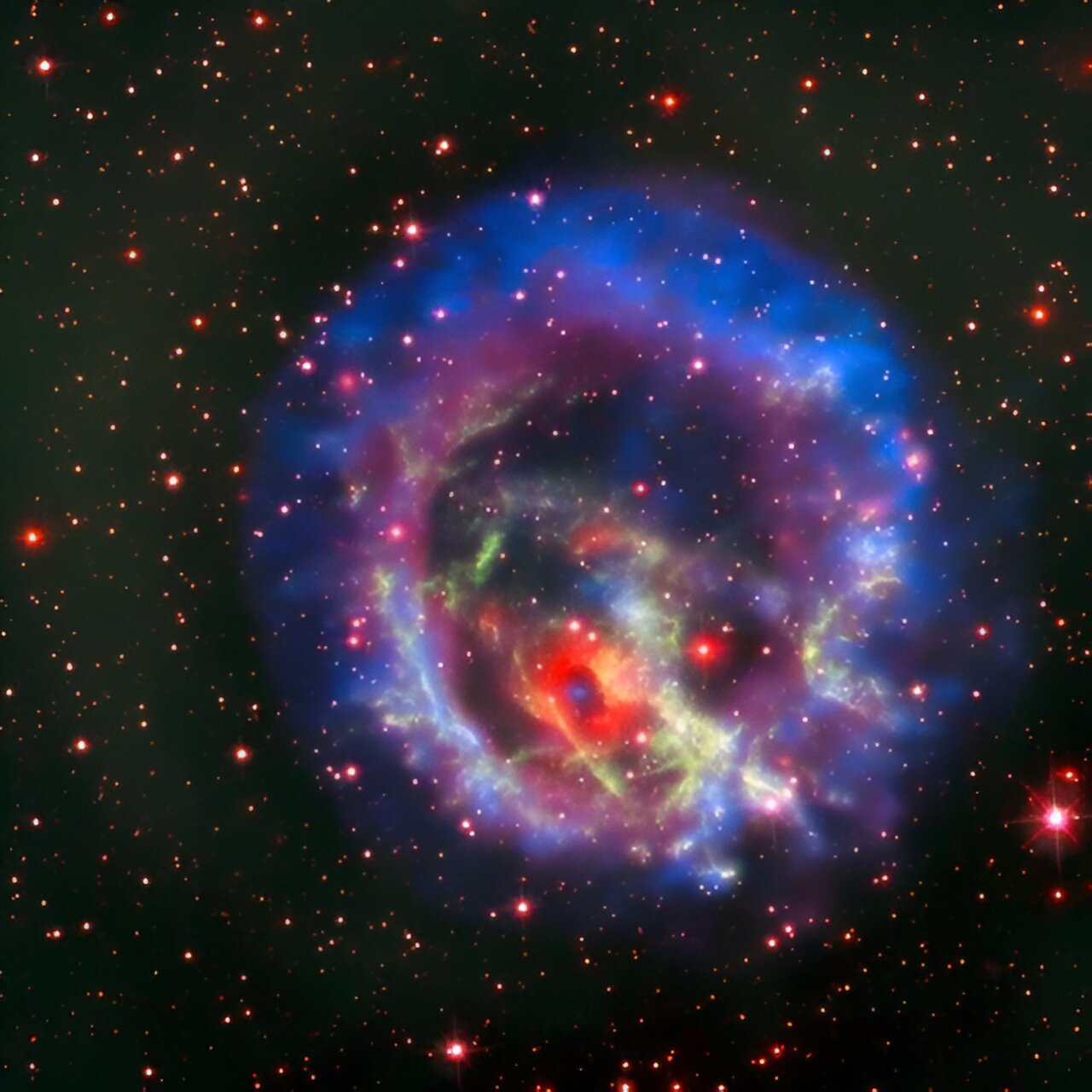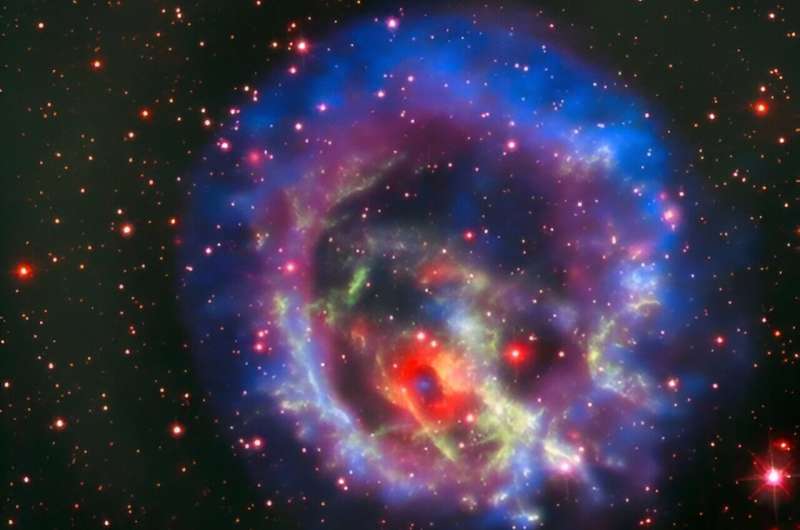

Lab experiments around the globe that are gearing up to recreate the mysterious phase of matter found in the early universe could also produce the world’s strongest electromagnetic fields, according to a theoretical analysis by a RIKEN physicist and two colleagues. This unanticipated bonus could enable physicists to investigate entirely new phenomena.
According to the Standard Model of particle physics, when extremely hot matter is squashed down into an ultradense object, it will form a plasma made up of subatomic particles known as quarks and gluons. But experiments are needed to confirm whether this is the case.
“Although such expectations exist, there are huge theoretical uncertainties, especially at ultrahigh densities,” notes Hidetoshi Taya of the RIKEN Interdisciplinary Theoretical and Mathematical Sciences Program. “Thus, experiments are greatly needed to study this extreme form of matter.”
In these experiments, physicists collide heavy ions (charged atoms) together and then examine the plasma created.
In previous decades, such tests mostly used high energies to create high temperatures. Recently, however, several experiments around the globe have been shifting focus to intermediate energies that will create high-density plasmas.
“This is crucially important to understand our origin, since such extreme conditions are realized in the early universe, neutron stars and exploding stars called supernovae,” explains Taya.
Taya had already studied intense lasers and the strong electromagnetic fields they produce. He realized that similar—but much stronger—fields may be created as an unexpected byproduct of these collision experiments. This possibility is tantalizing because physicists suspect that such ultrastrong fields will create novel physics phenomena.
But until now, physicists hadn’t been able to generate fields anywhere near strong enough to check this possibility.
“An intense laser is equivalent to roughly a hundred trillion LEDs,” says Taya. “But even these lasers are weak compared to the fields needed to produce these new strong-field physics effects.”
Taya and his colleagues have now conducted a theoretical analysis of these ultrastrong fields. The study is published in the journal Physical Review C.
“We’ve demonstrated that electric fields, which are strong and long-lived enough to explore strong-field physics—that cannot be approached with any other experiments—can be produced in heavy-ion collisions of intermediate energy,” says Taya.
However, physicists won’t be able to directly measure the produced field and thus confirm Taya’s analysis in planned collision experiments—they will only be able to measure the particles produced by the collision and their properties.
“To really test our prediction, it’s crucial to understand how the strong electromagnetic fields affect the observable particles,” says Taya. “We’re currently working on this.”
More information:
Hidetoshi Taya et al, Estimation of electric field in intermediate-energy heavy-ion collisions, Physical Review C (2024). DOI: 10.1103/PhysRevC.110.014901
Citation:
Smashing heavy ions together could produce the world’s strongest electric fields (2024, September 27)
retrieved 27 September 2024
from https://phys.org/news/2024-09-heavy-ions-world-strongest-electric.html
This document is subject to copyright. Apart from any fair dealing for the purpose of private study or research, no
part may be reproduced without the written permission. The content is provided for information purposes only.